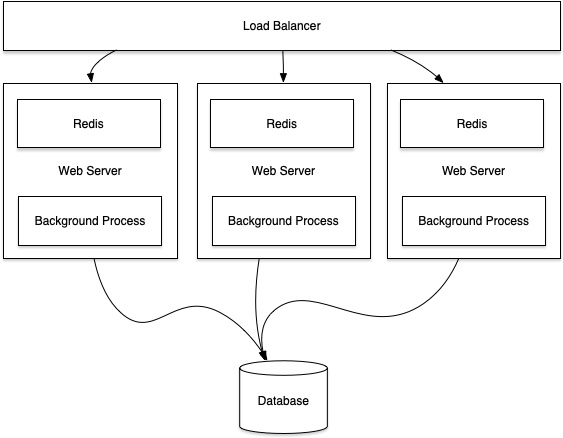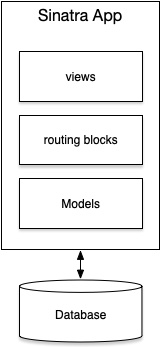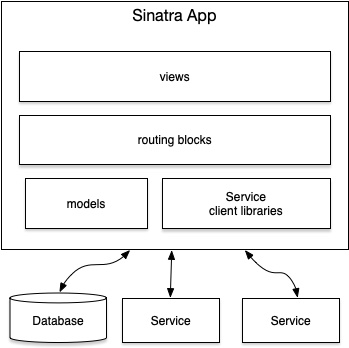Sinatra, Service Oriented Architectures and scaling
Logistics
- Reminder of how participation homework works
- Thoughts about “Begin”
- Why were people asking about Gemfiles? What is a Gemfile?
Walk through of a basic scenario
- Baseball scoring application - First cut
- Millions of fans are constantly refreshing page to see current score in real time as the game progresses
- A local official enters stats as the game progresses
- Default implementation with a single “monolithic” app
- How will things break down?
- Assuming:
- variable t = total number of teams in this league (guess 100)
- variable s = number of games happening simultaneously (guess: 4)
- Given a scoreboard app written in Sinatra
- What is a good assumption for the number of times per second the page will refresh?
Review of everything so far
- What a web server is and how Sinatra helps you create one
- Meaning of the URL
- ActiveRecord as the bridge between Ruby and the relational database
- The relationship between the client and the server
- How Unit testing is done with Minitest/Spec et al.
- The idea of Test Driven Development
- HTTP and it’s different Verbs like GET, PUT, POST etc.
Non Scalable Architecture (good starting point)

- A Web Server (aka App Server) runs your code.
- That server is connected by network to a database server.
- There are background processes and they run on the same server
- Scaling it follows a path of least resistance
Scalable Architecture (where you will end up)

- As load becomes greater, capacity is added where it is needed
- A “load balancer” sends traffic to different servers
- A “cache service” like Redis reduces the number of requests to the database
- And background processes are also replicated over multiple servers
- This kind of configuration is typical of many sites
- But what happens when the database cannot carry the load by itself?
- Managing the monolithic code base itself also becomes a problem
- Test suites take longer to run.
Getting from here to there
- It is natural to begin with a monolithic MVC design. This is true if you are implementing in Ruby/Sinatra, Ruby on Rails, Node or any other language.

A Service Oriented Architecture
- Some or all the models could be broken off into services, one model per service, or more likely, several models in one service.

- This is just a start. We will build on this scheme and use this in NanoTwitter
 (random Image from picsum.photos)
(random Image from picsum.photos)